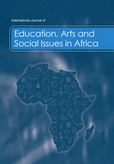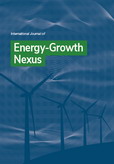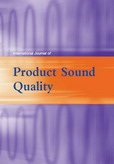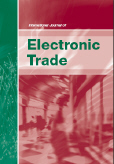Explore our journals
Browse journals by subject
Research picks
- Going spare roadside, cutting costs and emissions
A distribution model designed to streamline spare parts delivery to roadside assistance vehicles could cut costs in half, according to work in the International Journal of Shipping and Transport Logistics. The model builds a solution to the well-known Travelling Salesman Problem, a complex optimisation problem that involves finding the shortest route that visits each city once and ends at the starting point. The model was tested on real data from a roadside assistance company operating a fleet of service vehicles.
Abolfazl Shafaei, Mohammad Reza Akbari Jokar, and Majid Rafiee of Sharif University of Technology in Tehran, Iran, and Ahmad Hemmati of the University of Bergen in Bergen, Norway, explain that the major logistical challenge for roadside assistance fleets is balancing inventory space with repair capabilities. Service vehicles have limited space onboard, so they must prioritize particular spare parts and specific tools. Service vehicles usually visit a central warehouse on a regular schedule to restock on spare parts every few days. This adds to overall fuel costs, vehicle wear and tear, and lost servicing time. The new system replaces these frequent trips with a centralized delivery truck that optimizes the frequency and route of spare part deliveries.
However, drivers everywhere expect fast, efficient service from the company with which they entrust their vehicle's roadside maintenance, They also expect it to be inexpensive and a high-quality service.
The team tested several delivery schedules, including daily and every five days, and found that the most efficient option for this roadside assistance company was an optimized cycle on the first, second, and fourth days. This approach reduced costs by 56%.
The new model reduces the need to stockpile items by ensuring regular deliveries to the service fleet out on the road. This frees up space for repair equipment that allows for a wider variety of roadside fixes.
Beyond the immediate time and cost savings to companies running roadside assistance fleets, the model also promises significant environmental benefits. With fewer vehicles returning to a central warehouse to restock, fuel consumption and carbon emissions can be greatly reduced. Indeed, for the test case, the team found that annual carbon dioxide emissions could be reduced by 75 percent.
Shafaei, A., Akbari Jokar, M.R., Rafiee, M. and Hemmati, A. (2025) 'Using the route planning for supplying spare parts to reduce distribution costs: a case study in a roadside assistance company', Int. J. Shipping and Transport Logistics, Vol. 20, No. 1, pp.131-158.
DOI: 10.1504/IJSTL.2025.144995 - Robots get a grip on objects with a twist
Recent work in 6D object pose estimation holds significant promise for advancing robotics, augmented reality (AR), virtual reality (VR), as well as autonomous navigation. The research, published in the International Journal of Computational Science and Engineering, introduces a method that enhances the accuracy, generalization, and efficiency of determining an object's rotation and translation from a single image. This could significantly improve robots' ability to interact with objects, especially in dynamic or obstructed environments.
In robotics, 6D object pose estimation refers to determining both the orientation (rotation) and position (translation) of an object in three-dimensional space. "6D" describes six degrees of freedom: three for translation (X, Y, Z axes) and three for rotation (around those axes). Accurate pose estimation is critical for autonomous systems, including robots and AR/VR systems.
Challenges arise due to variations in object shapes, viewpoints, and computational demands. Current methods rely on deep-learning techniques using large datasets of objects viewed from various angles. These models struggle with unseen objects or those with shapes different from training data.
The new technique discussed by Zhizhong Chen, Zhihang Wang, Xue Hui Xing, and Tao Kuai of the Northwest Institute of Mechanical and Electrical Engineering in Xianyang City, China, addresses the various challenges by incorporating rotation-invariant features into an artificial intelligence system known as a 3D convolutional network. This allows the system to process an object's 3D point cloud, regardless of its orientation, leading to more accurate pose predictions even when the object is rotated or seen from unfamiliar angles. The network uses a consistent set of coordinates, known as canonical coordinates, which represent the object in a frame of reference unaffected by rotation. This innovation improves the system's ability to generalize to new poses, overcoming a limitation of conventional methods.
Not only is the new approach more accurate, it is more efficient and so needs less training data and less computer power, making it more suited for real-time, real-world applications.
Chen, Z., Wang, Z., Xing, X.H. and Kuai, T. (2025) 'Rotation-invariant 3D convolutional neural networks for 6D object pose estimation', Int. J. Computational Science and Engineering, Vol. 28, No. 8, pp.1–9.
DOI: 10.1504/IJCSE.2025.145133 - Hitting the right notes in vocal separation
Separating the human voice from the music in an audio recording has long been a challenge in signal processing. There are numerous so-called artificial intelligence (AI) tools around that can do this now with varying degrees of accuracy. The task is difficult due to the complexity of music, which involves multiple overlapping sources across the audible frequency spectrum. There is a need to increase the resolution and clarity of systems that can separate a vocal from the instrumental for a wide range of applications, such as post-production remixes of music, singing instruction and rehearsing.
A new method is reported in the International Journal of Reasoning-based Intelligent Systems. The researchers, Maoyuan Yin and Li Pan of the School of Music and Dance at Mudanjiang Normal University in Mudanjiang, China, have, they say, improved upon existing techniques by combining several advanced signal processing techniques. Their starting point is the use of a virtual microphone array. This virtual setup helps them localize the human voice within the overall sound and isolate it from the background.
The virtual microphone array creates a spatial representation of the sound, the team explains. To further improve on the results, the team also used near-field and far-field models to simulate the propagation of sound from sources at different distances. This gives them even more precision in localising the vocal within the sound.
Once the voice is accurately located, the system constructs a time-frequency spectrum for both the human voice and the background music. The time-frequency spectrum tracks how the energy of sound signals shifts along the frequency axis over time. The system can then analyse these changes and distinguish between vocal and instrumental, isolating them from one another.
The process is further refined by the use of a sophisticated algorithmic technique – the Hamming window function, which improves the efficiency of the requisite two-dimensional fast Fourier transform (2DFT) processing of the data. This step reduces the number of dimensions of the various extracted sound signals, simplifying the final extraction of vocal from music.
Test results demonstrate the effectiveness of this new approach with a localization error of just 0.50%. For background music, the feature extraction error is reduced to 0.05%. Overall, the team could reach almost 99 percent accuracy in separating vocal from instrumental. The same approach should also work in isolating a human voice from non-musical background noise. It could thus be used to improve automated spoken-word transcription services and help in the development of better hearing aids.
Yin, M. and Pan, L. (2025) 'Separating voice and background music based on 2DFT transform', Int. J. Reasoning-based Intelligent Systems, Vol. 17, No. 1, pp.50–57.
DOI: 10.1504/IJRIS.2025.145050 - Art for maths' sake
Fractals are intricate geometric shapes that exhibit self-similarity, meaning their patterns repeat at different scales, no matter how much they are magnified. Unlike traditional geometric figures such as circles or squares, which can be described with simple equations, fractals are generated through iterative mathematical processes, producing infinitely complex and detailed structures.
We see fractals all around us, in the branching structure of a tree, in clouds, snowflakes, coastlines, in the system of blood vessels and nerves in our bodies. Fractals can thus be used as a scientific model for many natural phenomena, However, their inherent beauty and intrigue can be a source of artistic inspiration too.
A study in the International Journal of Information and Communication Technology introduces an advanced approach that can be used to create novel images based on fractals. The optimisation algorithm, developed by Junli Wang of the School of Digital Arts at Wuxi Vocational College of Science and Technology in Wuxi, China, and known as the Equilibrium Optimiser (EO), significantly improving efficiency and design diversity.
Fractal geometry was first formalised by Benoît Mandelbrot in the 1970s and has influenced fields ranging from architecture to computer graphics and even music composition. The challenge in fractal art generation has traditionally been the reliance on manual input, requiring expertise and time-consuming adjustments. The new research overcomes some of those limitations through the EO algorithm, which enables a more efficient, diverse, and aesthetically rich exploration of fractal forms, according to the study.
The EO algorithm is an advanced optimisation algorithm based on how natural physical systems balance themselves. Unlike Genetic Algorithms (GA) and Particle Swarm Optimisation (PSO), the EO algorithm adjusts its search strategies dynamically to avoid becoming trapped in local optimisation points, a common problem of many mathematical models. This means that the EO algorithm can fine-tune the parameters needed to generate fractal patterns, producing designs with greater symmetry, complexity, and structural variation than traditional approaches. Wang's tests show that the EO algorithm works better than older algorithms in terms of the speed with which it converges on a solution and the visual quality and stability it produces.
Beyond its technical contributions, this research raises important questions about the intersection of technology and art. The ability to generate intricate fractal patterns automatically expands the creative possibilities available to artists, designers, and researchers. Unlike hand-drawn or physically painted works, digital fractal art is created through computation, challenging conventional ideas of authorship and artistic intent.
Wang, J. (2025) 'An alternative method for generating fractal art patterns based on the balanced optimiser algorithm', Int. J. Information and Communication Technology, Vol. 26, No. 5, pp.54–68.
DOI: 10.1504/IJICT.2025.145150 - Can one buy the greatest gift?
Can money buy happiness? An age-old question with as yet no definitive answer. The ancient philosophers could not find it, nor can modern economists with their spreadsheets and algorithms. A study in the International Journal of Happiness and Development has explored the complex relationship between income and happiness and provides some new insights into the debate.
Ling Zhang China Agricultural University in Beijing, China, and Sajal Lahiri of Southern Illinois University Carbondale in Carbondale, Illinois, USA, used data from the Panel Study of Income Dynamics, a comprehensive dataset that tracks individuals over time, and found that having a higher income does seem to correlate with increased life satisfaction. Importantly, the data is longitudinal, which means it tracks the same individuals over several years, allowing the researchers to control for unchanging factors such as personality traits or family background.
The study also found that for those with rising income, their happiness tends to rise too. Conventionally, the Easterlin Paradox has suggested that although wealthier people are generally happier at any given time, happiness does not necessarily increase as individuals become wealthier over their lifetime. This new research somewhat overturns that notion.
Of course, there are always exceptions to any rule, poorer people with seemingly plenty to smile about, who accept their lot and enjoy life regardless and conversely the super-rich individual who never smiles and seems perpetually burdened by their wealth.
The study used subjective well-being (SWB) scales, where individuals rate their life satisfaction on a scale from 1 to 10 to measure happiness. The results were telling: income was positively linked to life satisfaction, and the effect of income on happiness has become more pronounced in recent years. The study also showed that individuals whose income decreased in real terms, often because of factors such as technological progress or globalization, reported lower levels of life satisfaction. This suggests that declines in income, particularly among lower-income individuals, can negatively affect well-being.
While the relationship between money and happiness remains a nuanced topic, the evidence from this study adds weight to the argument that economic well-being plays a significant role in determining overall life satisfaction. These findings emphasise the importance of addressing income inequality and supporting policies that help individuals increase their earnings. As the study suggests, fostering economic fairness and opportunity may not only help individuals thrive, but could also enhance collective happiness.
Zhang, L. and Lahiri, S. (2025) 'Income and happiness: a study of a panel of US residents', Int. J. Happiness and Development, Vol. 9, No. 1, pp.1–14.
DOI: 10.1504/IJHD.2025.144959 - The real thing
Artificial intelligence (AI) and deep-learning technologies have led to the development of so-called deepfakes. These are generated or manipulated video or audio recordings that can alter a person's facial expressions, voice, or even their entire identity. While deepfakes have some legitimate uses in areas such as entertainment and art, their potential for misuse and for the spread of misinformation or damaging reputations has been recognised for several years. As the technology used to create deepfakes becomes more sophisticated, so there is a growing need to develop methods for deepfake detection.
Research described in the International Journal of Computational Science and Engineering introduces a hybrid deep-learning model that can itself improve the detection of deepfake content. The model combines two convolutional neural network (CNN) architectures, Inception ResNetV2 and Xception, along with long short-term memory (LSTM) networks. LSTM networks can process sequential data from video or audio segments and are particularly useful in spotting inconsistencies in manipulated media.
Shourya Chambial, Tanisha Pandey, Rishabh Budhia, and Balakrushna Tripathy of the Vellore Institute of Technology in Tamil Nadu, India, and Anurag Tripathy of Carnegie Mellon University in Pittsburgh, Pennsylvania, USA, trained their deepfake detector on a large dataset containing both real and manipulated video data. They were able to achieve an accuracy of almost 97 percent in tests. This suggests that the hybrid approach is capable of identifying subtle signs of manipulation in digital media and so decide whether a video is real or fake.
An important aspect of the research is that it emphasizes the importance of fine-tuning deep-learning models so that they work well with real-world data. An issue that commonly arises with certain types of AI model is that of "overfitting", where the algorithm is too closely tied to the specific characteristics of its training data and struggles to perform on new, unseen data. In the current work, the team monitored performance and adjusted it to ensure it remained effective with a wide range of video content.
Chambial, S., Pandey, T., Budhia, R., Tripathy, B. and Tripathy, A. (2025) 'Unlocking the potential of deepfake generation and detection with a hybrid approach', Int. J. Computational Science and Engineering, Vol. 28, No. 2, pp.151–165.
DOI: 10.1504/IJCSE.2025.144802 - Track and trace for those ten green bottles
Better technology for keeping track of glass beer bottles could be important in improving health and safety and operational efficiency in the alcoholic beverage sector, according to work published in the International Journal of Productivity and Quality Management.
A team in Brazil has evaluated three technologies, laser, carbon dioxide laser, and QR code systems and considered basic criteria such as security, cost, performance, and social impact. Carolina Xavier da Silva Seixas Rocha, Aldara da Silva César, and Cecilia Toledo Hernández, and Ualison Rébula de Oliveira of the Fluminense Federal University in Volta Redonda, and Fabiane Letícia Lizarelli of the Universidade Federal de São Carlos in São Carlos, Brazil, suggest that QR code technology offers the best balance between the various factors, particularly in terms of safety and broader social implications.
Traceability is the ability to track products through the supply chain and has become a critical issue in the food industry due to the increasing frequency of health problems associated with foodborne pathogens. According to the World Health Organization, millions of people are affected by foodborne illnesses each year, underlining the importance of systems that can trace the origin and movement of food products. Effective traceability can help quickly identify and remove products that pose a safety risk, which is vital for consumer protection.
The team focus on Brazil, where beer consumption is on the rise, and highlight the need for improved traceability in the beer industry. The team has identified how Brazilian glass bottle manufacturers lacking the ability to trace individual bottles. This limitation inevitably complicates the resolution of customer complaints and the identification of production issues.
While there are sophisticated methods for analysing a given bottle, the team suggests that the two-dimensional bar code system, known as the QR (Quick-response) code, offers a promising solution to traceability. QR codes are relatively inexpensive to implement, easy to use, and capable of providing real-time data on product movements. These features make them a strong choice for companies looking to meet both safety requirements and consumer demand for transparency. Additionally, QR codes align with increasing regulatory pressures in markets like Brazil, where food safety standards are becoming more stringent.
Rocha, C.X.d.S.S., César, A.d.S., Hernández, C.T., de Oliveira, U.R. and Lizarelli, F.L. (2025) 'Analysis and selection of glass bottle traceability technologies in the beer production chain', Int. J. Productivity and Quality Management, Vol. 44, No. 2, pp.178–204.
DOI: 10.1504/IJPQM.2025.144340 - Hydraulic revolution could cut emissions
Independent metering control systems (IMCS) are an advanced electro-hydraulic technology used in mobile machinery for construction, agriculture, and mining equipment. They represent something of a revolution in mobile machinery, offering the potential to drastically improve energy efficiency, reduce operational costs, and cut carbon emissions, so contributing to environmental sustainability. However, the path to their widespread adoption faces various challenges. A critical review of the state-of-the art International Journal of Hydromechatronics looks at hos these challenges might be addressed.
In standard hydraulic systems, fluid flow is controlled through multiway valves that adjust flow in a single direction. These usually rely on mechanical components to manage the flow. By contrast, IMCS decouples the inlet and outlet of the valve, enabling independent control of fluid flow both into and out of hydraulic actuators. This innovation allows for finer control over hydraulic functions, enhancing system performance and providing more precise energy management.
The primary advantage of IMCS lies in its potential to significantly reduce energy consumption. Traditional hydraulic systems often suffer from inefficiencies due to throttling whereby fluid flow is necessarily restricted to control speed, which leads to energy loss. By providing more precise regulation of fluid pressure and flow, IMCS can minimize these losses. This and other benefits are discussed by Ruqi Ding, Guohua Sun, and Ling Peng of East China Jiaotong University in Nanchang, Min Cheng of Chongqing University in Chongqing, and Junhui Zhang, Bing Xu, and Huayong Yang of Zhejiang University, in Hangzhou, China.
The researchers point out that all industries are facing increased pressure to meet stringent environmental standards. Improving hydraulic system efficiency by just 15 percent could save these industries billions of dollars annually, while also significantly lowering carbon emissions.
One of the main obstacles to more widespread adoption is the complexity associated with the integration of IMCS into existing machinery. Traditional hydraulic systems use mechanical controls that are relatively simple, whereas IMCS relies on sophisticated electronics and software to manage the complex control of multiple fluid inputs and outputs. To take on IMCS, industry will need to invest heavily in the new technology and on training and trust that the payback will be quick given the improvements they will see in the efficiency of their equipment.
Ding, R., Sun, G., Zhang, J., Peng, L., Cheng, M., Xu, B. and Yang, H. (2025) 'A review of independent metering control system for mobile machinery', Int. J. Hydromechatronics, Vol. 8, No. 5, pp.1–39.
DOI: 10.1504/IJHM.2025.144958 - Smashing the shatterproof glass ceiling, legally speaking
India has one of the largest legal professions in the world, with more than 600,000 law professionals. Yet, women remain underrepresented in the upper echelons of legal practice and the judiciary. Writing in the International Journal of Process Management and Benchmarking, P. Nisha and A. Vasumathi of the Vellore Institute of Technology in Vellore, India, explain how this gender disparity is particularly stark in India's Supreme Court and High Courts. Here, women represent only a small fraction of judges. The team points out that while many women have made notable progress in the legal field, they still face persistent barriers to career advancement and promotion opportunities, often referred to as the "glass ceiling".
The concept of the glass ceiling is not a new phenomenon, nor one restricted to India. Historically, women around the world have always faced significant obstacles in entering and progressing within the legal profession. Even as more women entered the profession, social expectations and family responsibilities have continued to stifle career progression to senior positions. This imbalance has persisted despite the fact that women now make up a significant proportion of law school graduates and practicing professionals.
Gender stereotypes have played a detrimental role in shaping the professional lives of women in law. This bias in the systems affects what kinds of cases women are assigned, the networking opportunities available to them, and their overall access to career-advancing resources. Faced with fewer high-profile cases and lower-paying ones at that exacerbates the problems they face, often by robbing them of the very opportunities that would allow them to gain the necessary experience to be considered for leadership roles.
The researchers suggest that institutional support could play a major role in addressing these disparities. They suggest that daycare facilities for the children of court employees might alleviate at least some of the burden and obligation on women professionals with offspring, where society often expects them to be the primary carer. However, such measures are not enough. Real progress will only happen when there is a cultural shift within law firms, judicial bodies, and educational institutions, the research suggests. Gender-neutral policies must be implemented at every level of the profession to ensure that women are not held back by biases or by societal expectations.
Nisha, P. and Vasumathi, A. (2025) 'The impact of personality traits of women advocates towards glass ceiling beliefs for career development', Int. J. Process Management and Benchmarking, Vol. 19, No. 2, pp.147–192.
DOI: 10.1504/IJPMB.2025.143986 - Going bananas for gluten-free flour
Research in Thailand has looked into the marketing dynamics of banana flour and how more consumers might be persuaded to use this healthy product as an alternative source of dietary fibre. Work in the International Journal of Business and Globalisation highlights the challenges and opportunities in promoting this healthy, gluten-free, alternative to wheat flour. Banana flour has been widely used in Africa and Jamaica, and more recently South America.
Adisak Suvittawat of Suranaree University of Technology in Nakhon Ratchasima, Thailand, explains that banana flour, also known as banana starch, is derived from unripe, green bananas. It is high in resistant starch, colloquially known as fibre, or roughage, which passes through our gastrointestinal tract undigested. Fibre is key to gut health but has additional benefits in terms of reducing the risk of obesity, type 2 diabetes, and colon cancer. However, despite the obvious benefits of banana flour in this regard, efforts to penetrate the Thai food market may have been half-baked so far with little awareness of the product among potential consumers.
In the present study, some 400 grocery shop customers were surveyed. They were generally found to be unfamiliar with the health benefits of banana flour, although were often aware of the product itself. Those shoppers who were well-informed about the benefits tended to have a positive perception of the product. The marketing challenge thus seems to lie in bridging the knowledge gap and overcoming consumer scepticism.
An additional barrier to more widespread use in cookery and baking is price. Banana flour is more expensive than other commonly used starch sources, such as tapioca or corn starch, and even all-purpose wheat flour. In a market where consumers are price-sensitive, this price discrepancy is a big obstacle.
When it comes to promotional strategies, the research indicates that online advertising has proven more effective than traditional print media in reaching consumers. Additionally, personal selling by sales teams, which allows for direct consumer education, was also found to be an effective method. Given the unfamiliarity many consumers have with banana flour, this hands-on approach is essential for persuading them of the product's merits.
Suvittawat, A. (2025) 'Banana flour goes to market: the marketing mix to introduce banana flour to the consumer market', Int. J. Business and Globalisation, Vol. 39, Nos. 3/4, pp.442–456.
DOI: 10.1504/IJBG.2025.144854
News
International Journal of Power and Energy Conversion is now an open access-only journal
We are pleased to announce that the International Journal of Power and Energy Conversion is now an Open Access-only journal. All accepted articles submitted from 18 March 2025 onwards will be Open Access, and will require an article processing charge of US $1600.
Prof. Varun Gupta appointed as new Editor in Chief of International Journal of Computer Aided Engineering and Technology
Prof. Varun Gupta from Gisma University of Applied Sciences's Multidisciplinary Research Centre for Innovations in SMEs in Germany has been appointed to take over editorship of the International Journal of Computer Aided Engineering and Technology.
International Journal of Internet Technology and Secured Transactions is now an open access-only journal
We are pleased to announce that the International Journal of Internet Technology and Secured Transactions is now an Open Access-only journal. All accepted articles submitted from 12 March 2025 onwards will be Open Access, and will require an article processing charge of US $1600.
Prof. Yuanquan Shi appointed as new Editor in Chief of International Journal of Internet Technology and Secured Transactions
Prof. Yuanquan Shi from Hunan First Normal University in China has been appointed to take over editorship of the International Journal of Internet Technology and Secured Transactions.
Prof. Amir Hasnaoui appointed as new Editor in Chief of International Journal of Management and Network Economics
Prof. Amir Hasnaoui from Excelia Business School in France has been appointed to take over editorship of the International Journal of Management and Network Economics.




